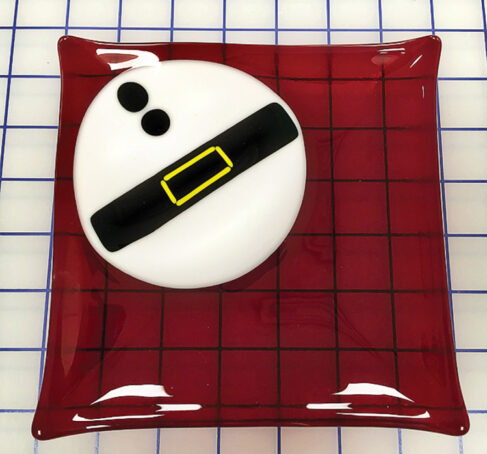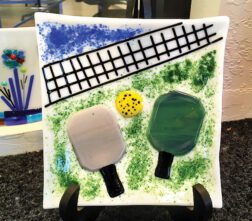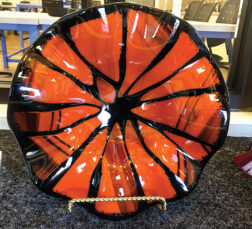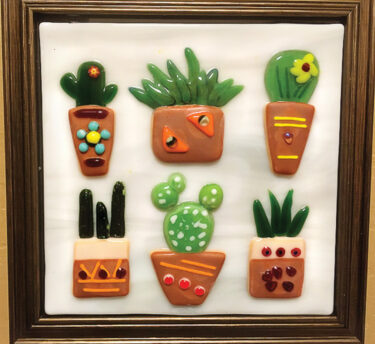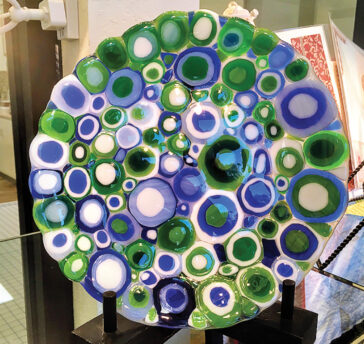Doris Betuel
Here at Robson Ranch, we have two active clubs that embrace the fun and creativity of glass art; the Stained Glass Club (SGC) and the Fused Glass Club (FGC). The SGC members join pieces of glass into art, and the FGC melts pieces of glass into art and functional items, such as bowls and plates. Both are great clubs to join, and this article will provide further information about fusing glass. Fusing glass is one of the fastest growing and popular techniques. Here is a quick tutorial on what it all means.
Glass in its usual shape is solid. As we heat the glass at high temperatures in our kiln, glass becomes a very thick liquid. As this molten glass is cooled, it again becomes a solid. That, in a nutshell, is glass fusion. First, you place pieces of glass in a design. Next you fire this design until the glass starts to melt together, then as it cools – the glass hardens into your design. We have different firing schedules or recipes to fire your glass, which will determine how it will look when it cools down and hardens again.
The recipes – Depending on the look or design you are going for, you can choose between a tack, contour, full, or casting recipe.
1. A tack fuse is a firing recipe in which the glass pieces are melted just enough to glue the pieces together. The edges are somewhat softened, and the shapes of the cut glass stay pronounced and distinct.
2. The next level of fusing is a contour fuse – this recipe increases the time glass sits at the high temperature, resulting in a higher degree of melting. The pieces are again glued together, but now the edges of the pieces are softened further.
3. A full fuse occurs when the glass sits at that high temperature even longer, and now the glass gets a chance to really melt together. The pieces are not only glued together, but flow into one another and become one flat piece. Full fuses are generally what people desire for functional pieces like dishes or plates.
4. Casting is a recipe in which we put bits of glass into a preformed mold, and melt it all together into a solid shape.
If this article intrigues you and you would like to give it a try, swing by Studio 5 at the Creative Arts Center on Mondays or Wednesdays, from 9 a.m. to 3 p.m., or Sundays from 10 a.m. to 2 p.m. We would be happy to show you around, answer your questions, and maybe sign you up for an upcoming beginner class. For further information, please contact Doris Betuel at dorisbetuel@gmail.com.
(If you are interested in stained glass, please contact Becky Sheffler at shefflerbecky@gmail.com.)

